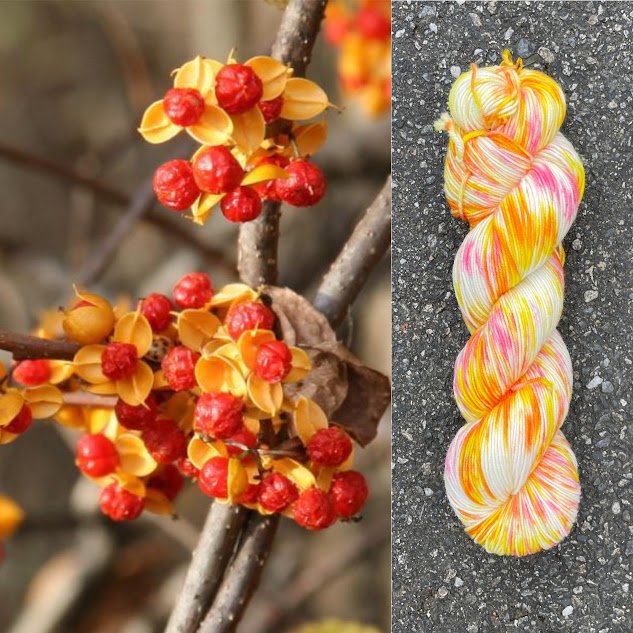Bittersweet
Bittersweet (Celastrus scandens) vines use their twining stems to climb trees, fences, and other structures. They can reach heights of 20 to 30 feet or more. Bittersweet berries are a valuable food source for wildlife, including birds. Birds help distribute the seeds, contributing to the plant's dispersal. In some traditions, the intertwining of bittersweet vines has been associated with love, unity, and the cyclical nature of life.
Curious to see how it knits up? Click HERE to see projects in Ravelry.
Here are a few of our favorite coordinating semisolids: Earth Lichen Pink, Firefly Yellow, Mushroom Stem, Piping Plover Orange
Bittersweet (Celastrus scandens) vines use their twining stems to climb trees, fences, and other structures. They can reach heights of 20 to 30 feet or more. Bittersweet berries are a valuable food source for wildlife, including birds. Birds help distribute the seeds, contributing to the plant's dispersal. In some traditions, the intertwining of bittersweet vines has been associated with love, unity, and the cyclical nature of life.
Curious to see how it knits up? Click HERE to see projects in Ravelry.
Here are a few of our favorite coordinating semisolids: Earth Lichen Pink, Firefly Yellow, Mushroom Stem, Piping Plover Orange
Bittersweet (Celastrus scandens) vines use their twining stems to climb trees, fences, and other structures. They can reach heights of 20 to 30 feet or more. Bittersweet berries are a valuable food source for wildlife, including birds. Birds help distribute the seeds, contributing to the plant's dispersal. In some traditions, the intertwining of bittersweet vines has been associated with love, unity, and the cyclical nature of life.
Curious to see how it knits up? Click HERE to see projects in Ravelry.
Here are a few of our favorite coordinating semisolids: Earth Lichen Pink, Firefly Yellow, Mushroom Stem, Piping Plover Orange


